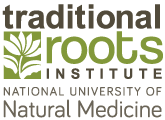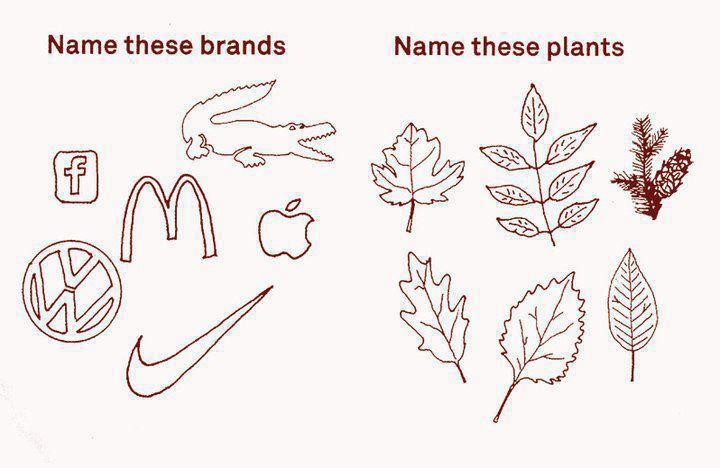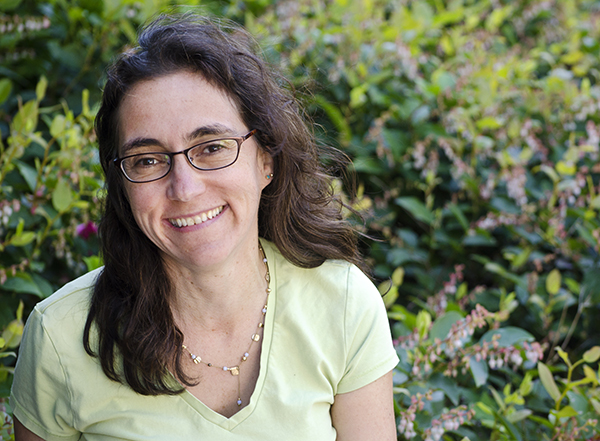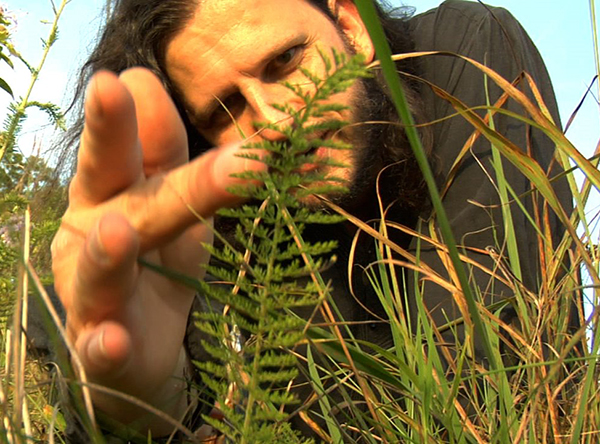There is an infographic* going around on social media that is telling:
We are becoming nature-illiterate, and the consequences reach beyond not being able to identify the trees around us. It is telling that we can identify brands and not leaves. It speaks volumes about the values in modern, so-called ‘Western’ culture. And yet, we know that being outside, being near trees, gardening, being in green spaces are all good for us. There are even studies! For more on the health benefits of being outside.
Clearly, there is a crisis of disconnection.
Luckily, the solution is right outside our doors: right there, in the crack at the edge of the road. Right there in the untended yard. Right here on the café patio where I am writing. Literally.
By not having language for the plants around us, by not being able to name nor sometimes even SEE the individual species, we lose our access to the medicine the plants offer.
I don’t just mean seeing Hawthorn and knowing it is medicine for the heart, though this is valuable if you are into studying herbal medicine. I mean that, by noticing the plants growing around us we can benefit from the OTHER medicine they offer: the calming, uplifting presence of mature trees; the lesser known edible fruit delights that summer offers (mulberries! Service berries! Hackberries!); the subtle medicinal information for a plant that is determined by WHERE it grows, HOW it grows.
We can observe this. Some herbal traditions advocate choosing one single plant to work with for an entire year. One observes the plant through its different stages of growth, touches and tastes the plant’s different parts, talks to the plant, and listens for what the plant wants to say.
There is immense wisdom and value in this approach, and I have seen profound results when I have gotten to know herbs in this way.
And, the funny thing about herbs is that as you learn their names, and what they look like, you will start to notice them everywhere. They were there all along, but we humans make sense of all the sensory input we receive by limiting what we ‘see’.
We only ‘see’ what we can name.
And if we don’t ‘see’ the plants, we can’t connect to their medicine.
Just as it is much harder to have a meaningful conversation with someone new when you don’t remember their name – ahem, when you weren’t present when they told you their name – it is harder to engage with plants when you don’t know one from the other.
Luckily, we can remedy this situation. Easily, and for free.
My reconnection prescription is simple.
Go outside. Stay a while.
Be present (Ahem… look up from your phone. Or, pause the dialogue you are having in your head as you walk down the street.)
Observe with an open mind & heart.
Ask questions (of the plants, of yourself, of others).
Interact with the plants: use your senses to see, smell, touch; eat weeds (once you have safely confirmed their identity), make tea, make bouquets for your kitchen table.
Watch what happens to the quality of your lived experience as you walk from house to car, from car to office – noticing and greeting these new friends growing everywhere in this city.
Notice how you notice life differently as you observe its vitality emerging even from between the cracks in the pavement.
First steps:
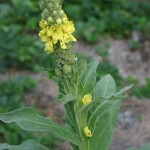
Choose one plant.
Make it one that you just keep noticing, everywhere you go, or one that has some medicine that is relevant for you, or one that you learn to be edible and tasty, e.g., red raspberry leaf, a well-known women’s tonic herb; or Dandelion, ubiquitous medicinal friend of mine.
Get to know it. If it’s edible, like dandelion leaf or burdock root, try it.
If it is a tree that you choose, hang out underneath it. Meditate, journal, daydream with it. Take notes. Watch the plant grow, watch how it responds to sunlight, wind, rain, temperature changes. Smell it, touch it. Share what you learn.
Want more steps, more info? Stay tuned for an article on harvesting and eating wild spinach.
Resources:
Try this online tree & shrub identification if you are in Ontario or somewhere with a similar range of ecological zones.
Here are some books I like, and find useful either for field identification or learning more about a plant:
- Edible wild plants: Wild Foods from Dirt to Plate by John Kallas, PhD.
- Backyard medicine: Harvest & Make Your Own Herbal Remedies by Julie Bruton-Seal & Matthew Seal.
- Wildflowers of Riverwood: Field Guide to wildflowers of Mississauga’s garden park and the Greater Toronto Area by Nina Karalin Barabas, PhD, and Eva Sabrina Bruni.
- Lone pine series.
- Ontario Wildflowers by Linda Kershaw
- Trees of Ontario by Linda Kershaw
Image key:
Trees: (from left to right, top to bottom): maple, ash, pine with cone, oak, poplar & white birch
(*note that leaves are best used to identify a tree in context – bark matters, how the leaves are arranged matters, how serrated a leaf is matters, shape of catkins or seeds matters, and so on, thus, some of these identifications from the sketches are up for debate)
Brands: facebook, volkswagon, mcdonalds, lacoste, apple, & nike
